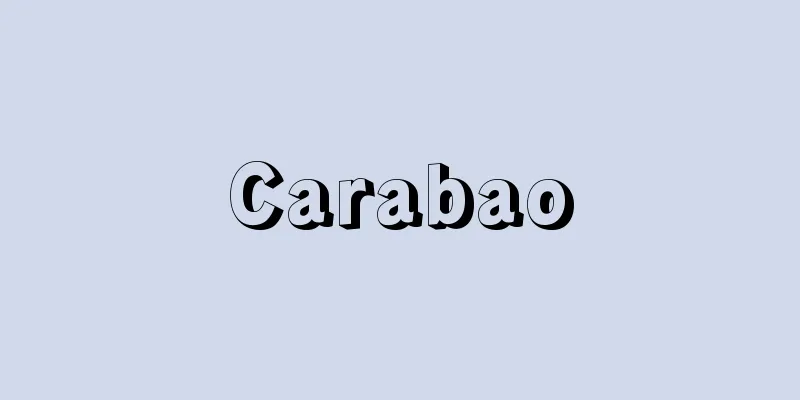Chiba Shusaku

|
A swordsman of the late Edo period, and the founder of the Hokushin Itto-ryu school of swordsmanship. His given name was Kan, his pen name was Narimasa, and he was called Toryu. He was born as the second son of Chiba Chuzaemon Shigetane (Koemon Narikatsu), a local samurai from Hanayama Village, Kurihara County, Rikuzen Province (Miyagi Prefecture) (some say it was Araya Village in the same county, or Kesen Village in Kesen County). From the age of seven or eight, he learned the family tradition of the Hokushin-ryu style of swordsmanship from his father, and showed great talent. When he was 15, his family left for Edo, settling in Matsudo-shuku (Matsudo City, Chiba Prefecture) on the Mito road, where his father became a veterinary surgeon under the pseudonym Urayama Jutei, and his brothers became apprentices under Asari Matashichiro Yoshinobu, a native of the same area who practiced Nakanishi-ha Itto-ryu. Eventually, their extraordinary talent was recognized, and they studied under the head of the Edo school, Nakanishi Chubei Tsugumasa, and under the guidance of Terada Muneari, Shirai Toru, Takayanagi Matashiro, and others, and were granted full proficiency in the art after three years of training. In 1820 (Bunsei 3), at the age of 27, he attempted to travel around the country from northern Kanto to the Tokai region to train, where he learned about the advantages and disadvantages of each style and school. He realized the need to reorganize the traditional Itto-ryu martial arts, and in 1822 he combined the Hokushin and Itto-ryu styles, added his own ideas and declared it to be Hokushin Itto-ryu. He opened a dojo in Shinagawa-cho, Nihonbashi, and called it Genbukan. It quickly gained popularity due to its flexible teaching methods, simplified rank promotion system, and other excellent dojo management, and the number of students increased rapidly, so in the fall of 1825, it moved into the mansion of a certain samurai samurai, adjacent to the Yochijuku school of Confucian scholar Tojo Ichido in Kanda Otama-ga-ike. After Ichido's death, it further purchased the property, expanding the scale of the dojo, and was blessed with excellent swordsmen among the children and disciples of the family, so Genbu-kan became known as the best dojo in Edo. Shusaku had four sons, the eldest Kisotaro, the second Eijiro, the third Dosaburo, and the fourth Tamonshiro, all of whom were gifted, but Eijiro in particular possessed outstanding skill, and was praised alongside Shintaro, the eldest son of Saito Yakuro of the Shinto Munenryu Renpeikan, and Naomasa (the fourth generation), the adopted son of Momoi Shunzo of the Kyoshinmeichi-ryu Shigakukan. His younger brother Sadakichi, who assisted at the Genbukan, was also a highly renowned swordsman. Famous pupils included Kaiho Hanpei, Inoue Hachiro, Ooba Tozo, Mori Yozo, as well as Watanabe Seizaemon and Ozawa Torakichi from Mito. Other notable figures from the late Edo period, including Hachiro Kiyokawa and Ryoma Sakamoto, also came from the same school. [Ichiro Watanabe] Source: Shogakukan Encyclopedia Nipponica About Encyclopedia Nipponica Information | Legend |
|
江戸末期の剣術家、北辰(ほくしん)一刀流の開祖。名は観(かん)、字(あざな)は成政(なりまさ)、屠龍(とりゅう)と号した。陸前国(宮城県)栗原(くりはら)郡花山(はなやま)村(同郡荒谷(あらや)村、気仙郡気仙村との説もある)の郷士、千葉忠左衛門成胤(幸右衛門成勝)の次男に生まれ、7、8歳のころから父について家伝の北辰流を習い、その偉才ぶりを発揮した。15歳のとき一家は江戸を目ざして出郷、水戸道中松戸宿(千葉県松戸市)に落ち着き、父は浦山寿貞(うらやまじゅてい)と号して馬医に、周作兄弟は同地出身の中西(なかにし)派一刀流の浅利又七郎義信(あさりまたしちろうよしのぶ)のもとに入門した。やがて非凡の才を認められて、江戸の宗家(そうけ)中西忠兵衛子正(つぐまさ)に学び、寺田宗有(てらだむねあり)、白井亨(しらいとおる)、高柳又四郎らの指導を受けて、修行3年で免許皆伝を許された。1820年(文政3)27歳のとき、北関東から東海地方への廻国(かいこく)修行を試み、各流各派の長短得失を知り、伝統的な一刀流兵法を改組する必要性を痛感し、22年北辰・一刀両流をあわせ、さらに創意を加えて北辰一刀流を標榜(ひょうぼう)し、日本橋品川町に道場を開き、玄武館(げんぶかん)と称した。 その柔軟性に富んだ教授法と昇段制の簡略化など、優れた道場経営でたちまち人気を博し、門人が急増したため、1825年の秋には、神田お玉が池の儒者東条一堂(とうじょういちどう)の瑤池塾(ようちじゅく)に隣接する旗本某の屋敷を買い求めて移転した。さらに一堂の没後はこれを買収して、道場の規模を広げ、一族子弟門人中にも優れた剣客に恵まれて、玄武館は江戸町道場の随一とうたわれた。周作には4人の男子があり、長男奇蘇太郎(きそたろう)、次男栄次郎、三男道三郎、四男多門四郎のいずれも資質に恵まれたが、とくに栄次郎はすばらしい腕前の持ち主で、神道無念流練兵館(れんぺいかん)斎藤弥九郎(やくろう)の長男新太郎、鏡新明智(きょうしんめいち)流士学館桃井春蔵(もものいしゅんぞう)の養子直正(なおまさ)(4代)と並び称された。また実弟で玄武館を補佐した定吉も剣名が高かった。門人としては、海保帆平(かいほはんぺい)、井上八郎、大羽藤蔵(おおばとうぞう)、森要蔵(もりようぞう)、また水戸の渡辺清左衛門、小沢寅吉らが有名であった。幕末の清河八郎(きよかわはちろう)、坂本龍馬(りょうま)らも同門の出身である。 [渡邉一郎] 出典 小学館 日本大百科全書(ニッポニカ)日本大百科全書(ニッポニカ)について 情報 | 凡例 |
>>: Ciba-Geigy [Company] (English name) CIBA-GEIGY AG
Recommend
Park Kyung-ri
A Korean female writer. She is the mother-in-law o...
Catadioptric system
…(6) Catadioptric system An optical system consis...
Kanko - Kanko
…It is found in the East China Sea and south of c...
"Les chansons de Bilitis" (English)
…He was a classmate of Gide in his junior high sc...
Tanner, Väinö (Alfred)
Born: March 12, 1881 in Helsinki Died April 19, 19...
ice
〘Noun〙 (ice)① Ice. It is also used in combination ...
general education
...The purpose of this program was to provide stu...
Bärenbrummen (English spelling)
…In some regions, instead of a stick, horsehair o...
Wooly rhinoceros (hairy rhinoceros)
A large, hairy rhinoceros that was widespread from...
Tong-dian; T`ung-tien
A book of institutional history written by Du You ...
Kineya Sakujuro - Kineya Sakujuro
...Lyrics by Fujimoto Tobun. Music by the first K...
Fizz
A style of long drink cocktail in which spirits a...
Kanmon Tunnel
A railway and national highway tunnel that runs u...
Wellman, William
Born: February 29, 1896 in Brookline, Massachusett...
Shinichi Iwaya
...4 acts, 8 scenes. Original story by Muramatsu ...









